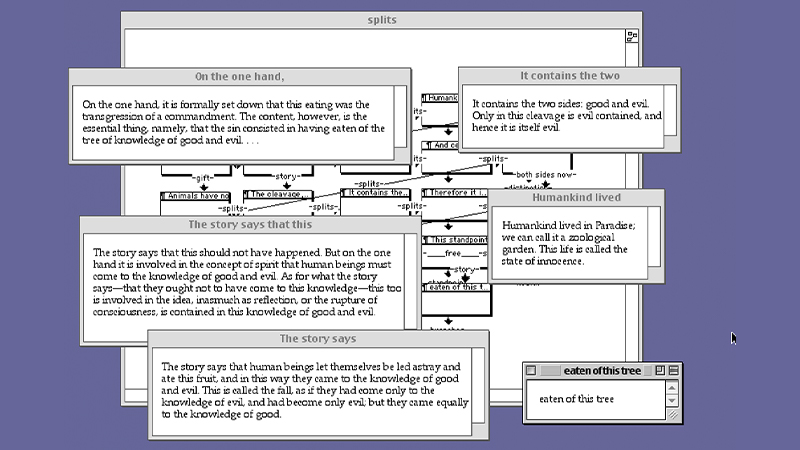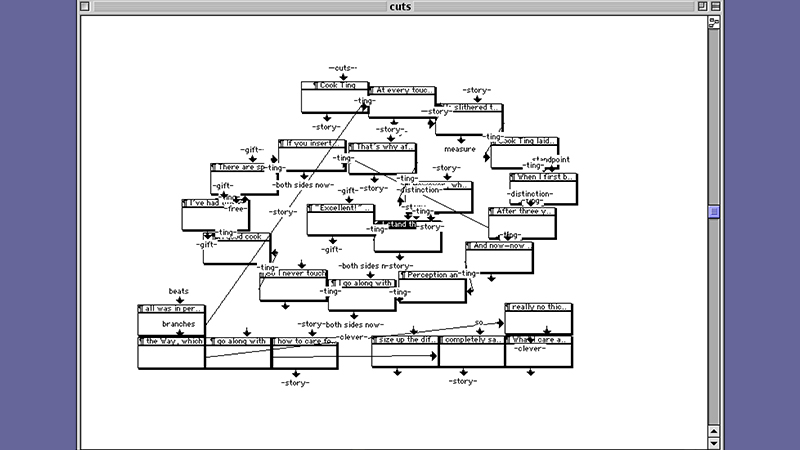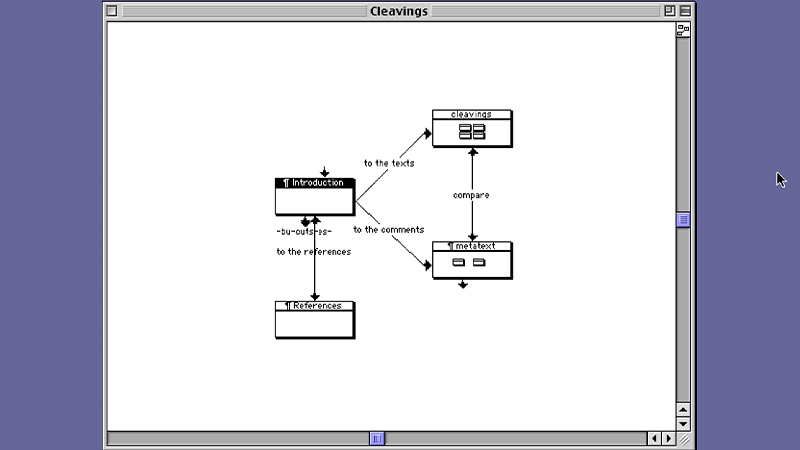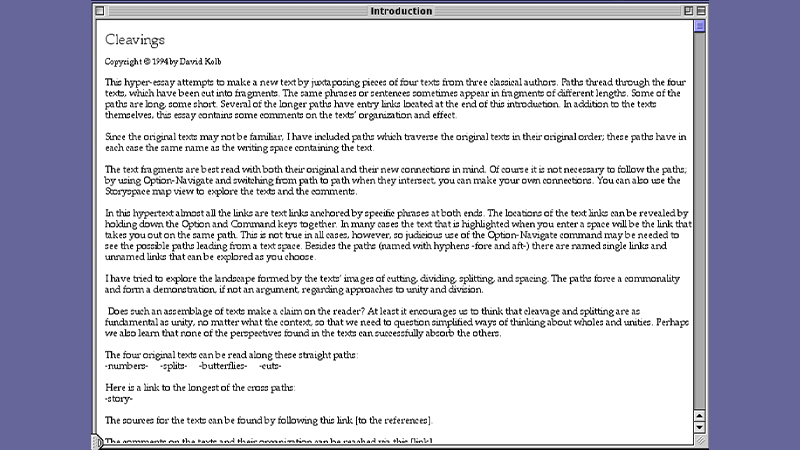Produced as part of Kolb's "Socrates in the Labyrinth," this hypertext essay "attempts to make a new text by juxtaposing pieces of four texts from three classical authors. Paths thread through the four texts, which have been cut into fragments of different lengths. Some of the paths are long, some short. Several of the longer paths have entry links located at the end of this introduction. In addition to the texts themselves, this essay contains some comments on the texts' organization and effect.
Since the original texts may not be familiar, I have included paths which traverse the original texts in their original order; these paths have in each case the same name as the writing space containing the text.
The text fragments are best read with both their original and their new connections in mind. Of course it is not necessary to follow the paths; by using Option-Navigate and switching from path to path when they intersect, you can make your own connections. You can also use the Storyspace map view to explore the texts and the comments.
In this hypertexts [sic] almost all of the links are text links anchored by specific phrases at both ends. The locations of the text links can be revealed by holding down the Option and Command keys together. In many cases the text that is highlighted when you enter a space will be the link that takes you out on the same path. This is not true in all cases, however, so judicious use of the Option-Navigate command may be needed to see the possible paths leading from a text space. Besides the paths (named with hyphens -fore and aft-) there are named single links and unnamed links that can be explored as you choose. [ . . . ]
I have tried to explore the landscape formed by the texts' images of cutting, dividing, splitting, and spacing. The paths force a commonality and form a demonstration, if not an argument, regarding approaches to unity and division.
Does such an assemblage of texts make a claim on the reader? At least it encourages us to think that cleavage and splitting are as fundamental as unity, no matter what the context, so that we need to question simplified ways of thinking about wholes and unities. Perhaps we also learn that none of the perspectives found in the texts can successfully absorb the others." -- David Kolb, "Introduction"
1 COPY IN THE NEXT
An unpublished copy.
This copy includes application files for StorySpace as well as project files. These files are not made available on The NEXT due to copyright. David Kolb gave the files for this copy to Dene Grigar in 2022.
COPY MEDIA FORMAT
File(s)



